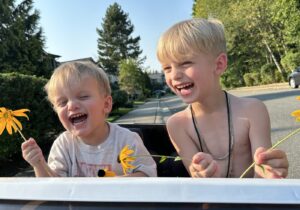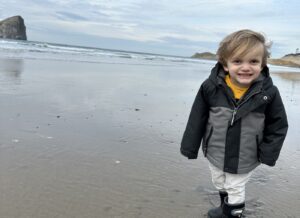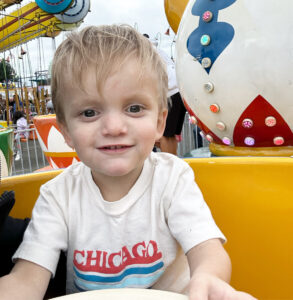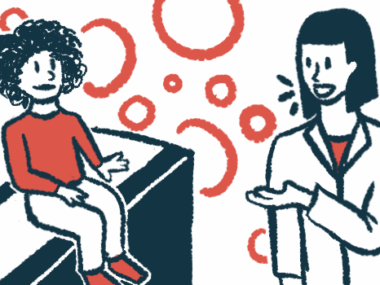Our son’s smaller size from Alagille syndrome creates obstacles
Finding workarounds is part of our role as parents and caregivers
Written by |

There are several words I’d use to describe my 3-year-old son, Finley. My wife, Dani, started a tradition for our two boys where each night they say words of affirmation that describe themselves. Finley is strong, determined, and brave. He’s also handsome, resilient, and smart. I love these personal reminders about who they are, and that they are loved, always and forever.
While it may not fit with the language we use at bedtime, Finley is also a bit of a wild man. His older brother, Jackson, is the more cautious explorer. Finley is the type of kid to jump off the couch without any regard for how he might land. He doesn’t know that he’s small for his age. He’s uniquely himself and has the personality to hold his own as the smallest kid in his class.
Finley is small because he has Alagille syndrome. He requires a diet that is dense in calories and fat to help him grow. Because of his liver disease, his body has trouble processing fats, which is one factor that causes his growth to be slower than others his age. Last week, I wrote about Finley’s nutrition and the progress he’s made in the three years of life. He is our strong Alagille warrior.
Overcoming several obstacles
Having a child who is so small presents certain challenges. People tend to assume his age based on his size, so we have an elevator pitch to explain his condition. Our family knows the message we need to share as well as how we should share it, based on previous interactions we’ve had.
The initial perception people have of him, based on his size, has been the most difficult hurdle for us to clear. One example I’ll always remember happened when he was in day care. Finley had been in the infant room, but he was ready to move to the next room based on his age and development.
We waited for the news that he’d be changing rooms. And waited. And waited. The day care center was experiencing some turnover in leadership, so I wanted to give them the benefit of the doubt that this detail got lost in the shuffle. But we grew tired of waiting, so we emailed them to let them know how old Finley was. Even though he appeared small, we said, he was fully capable of moving to a more age-appropriate room.
The message was received, and we were successful in quickly getting him moved to a room with more kids his age. That was an eye-opening experience for us. If we hadn’t said something, who knows how long he would’ve stayed in the infant room. This story serves as a reminder to all caregivers of kids with rare diseases. It’s important that we advocate for our children when we feel the time is right.
Another obstacle appeared when we attended a county fair. Finley wanted to go on all of the rides, like his brother, but he was too short for almost everything but the carousel. We were almost turned away at the teacup ride, but the worker saw how excited Finley was and let him take a turn. That made Finley’s day. A small act of kindness from that staff member changed our son’s entire experience.
As Finley has gotten older, the challenges we encounter because of his size have changed. He may be the smallest person in his class at day care, but he’s right on par developmentally. Where we run into trouble is when he wants to do what everyone else his age is doing.
Some playground obstacles are large for him. He has trouble reaching the pedals on the tricycle he desperately wants to ride. He doesn’t want to use a booster seat at the table, but can’t yet sit on the chair and reach his food.
We’ve had to find solutions for each situation. Some of these solutions we like. We were able to get pedal extenders for his tricycle, for example, so he can reach them with his feet. Other solutions aren’t our first choice, such as allowing him to stand on his chair to eat at the table. But it’s a solution that allows him to be autonomous and happy. That’s our main goal: We want him to believe he can do anything.
Finley doesn’t let his size slow him down. He’s strong, determined, and brave, as his nightly words of affirmation acknowledge. He may have a rare genetic condition, but he is uniquely himself.
Note: Liver Disease News is strictly a news and information website about the disease. It does not provide medical advice, diagnosis, or treatment. This content is not intended to be a substitute for professional medical advice, diagnosis, or treatment. Always seek the advice of your physician or other qualified health provider with any questions you may have regarding a medical condition. Never disregard professional medical advice or delay in seeking it because of something you have read on this website. The opinions expressed in this column are not those of Liver Disease News or its parent company, Bionews, and are intended to spark discussion about issues pertaining to liver disease.










